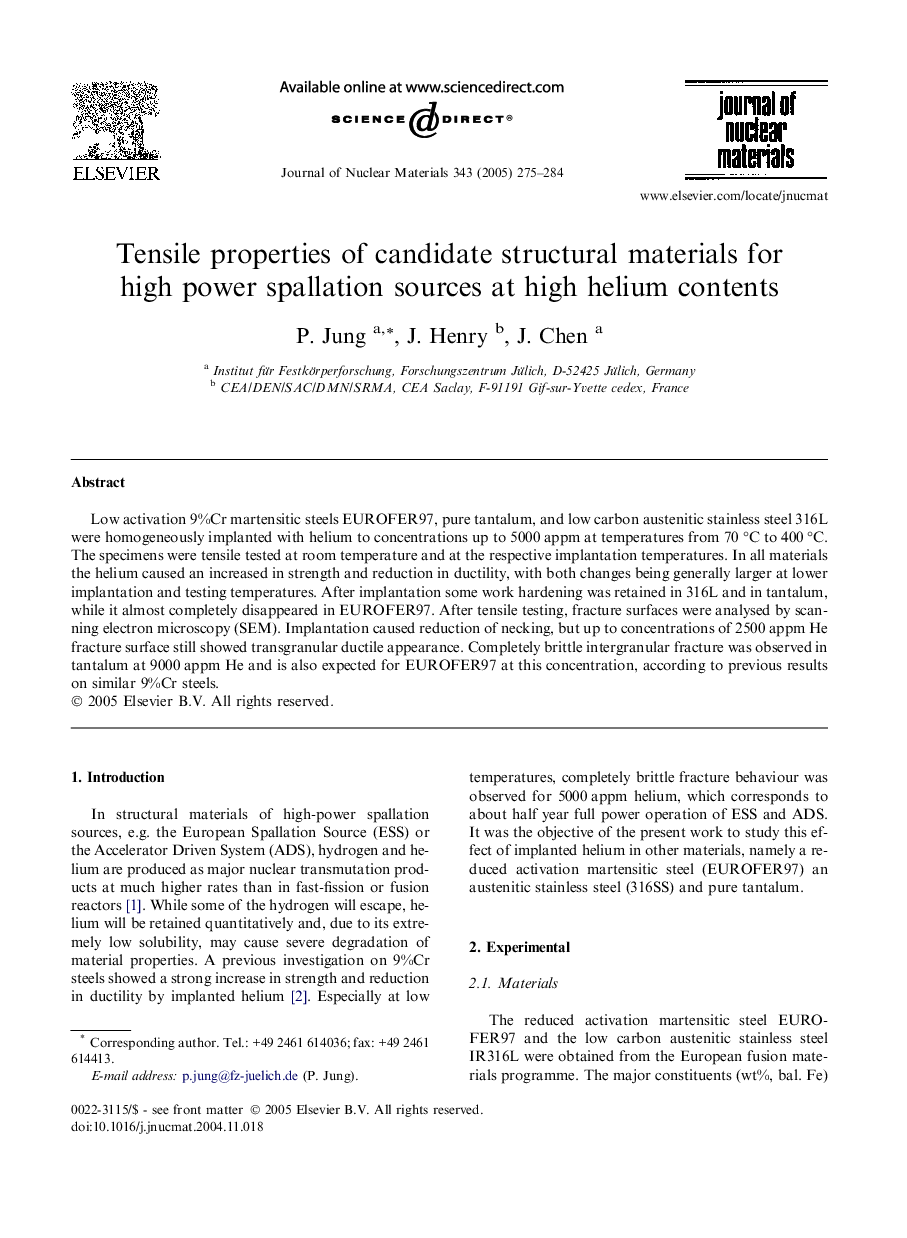| Article ID | Journal | Published Year | Pages | File Type |
|---|---|---|---|---|
| 9793715 | Journal of Nuclear Materials | 2005 | 10 Pages |
Abstract
Low activation 9%Cr martensitic steels EUROFER97, pure tantalum, and low carbon austenitic stainless steel 316L were homogeneously implanted with helium to concentrations up to 5000 appm at temperatures from 70 °C to 400 °C. The specimens were tensile tested at room temperature and at the respective implantation temperatures. In all materials the helium caused an increased in strength and reduction in ductility, with both changes being generally larger at lower implantation and testing temperatures. After implantation some work hardening was retained in 316L and in tantalum, while it almost completely disappeared in EUROFER97. After tensile testing, fracture surfaces were analysed by scanning electron microscopy (SEM). Implantation caused reduction of necking, but up to concentrations of 2500 appm He fracture surface still showed transgranular ductile appearance. Completely brittle intergranular fracture was observed in tantalum at 9000 appm He and is also expected for EUROFER97 at this concentration, according to previous results on similar 9%Cr steels.
Related Topics
Physical Sciences and Engineering
Energy
Nuclear Energy and Engineering
Authors
P. Jung, J. Henry, J. Chen,
